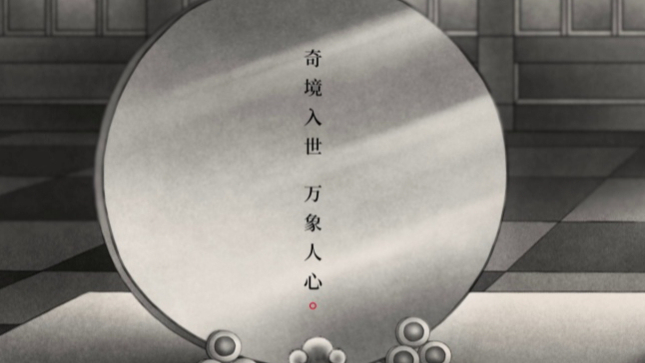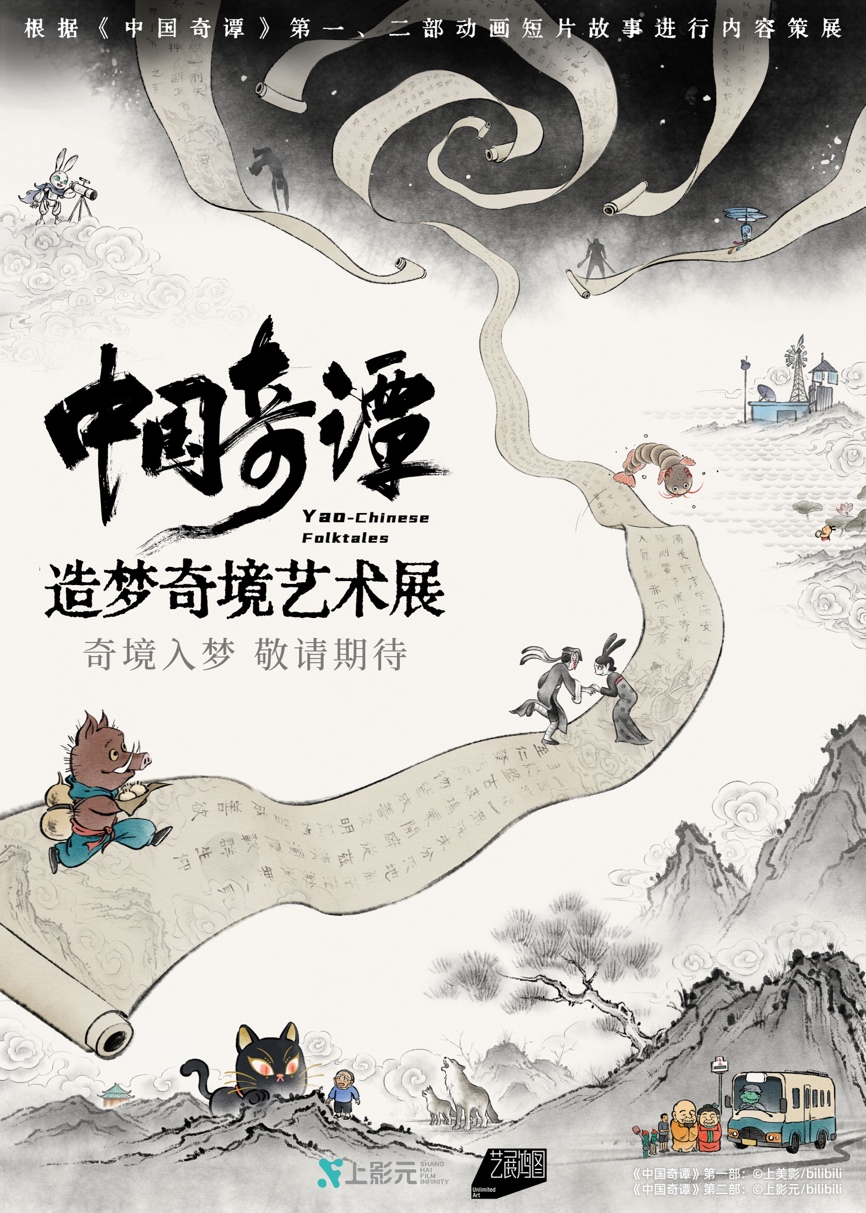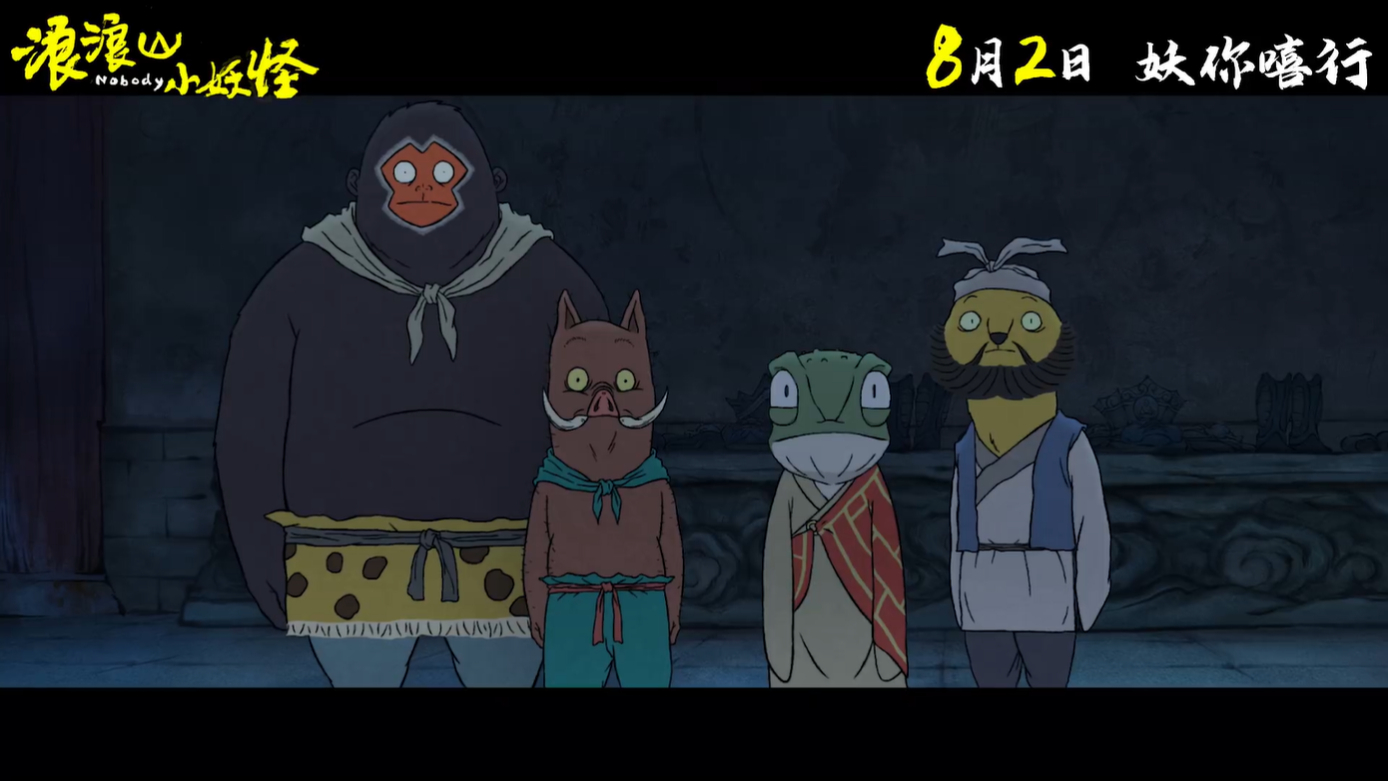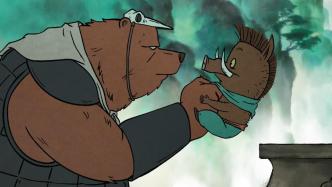
The animation short film collection "China's Strange Tan" jointly produced by Shanghai Animation Film Studio and bilibili has aroused strong responses once it was launched. At present, only two episodes have been updated, and the work has received an excellent rating of 9.6 on Douban. As a tribute to the 100th anniversary of the birth of Chinese animation, this work not only inherits the "rhythm" and "soul" of many classic masterpieces such as "Havoc in Heaven", "The Book of Heaven", "Black Cat Sheriff" and other classic works, but also shows the The thinking and innovation of the young generation creators of contemporary Chinese animation.
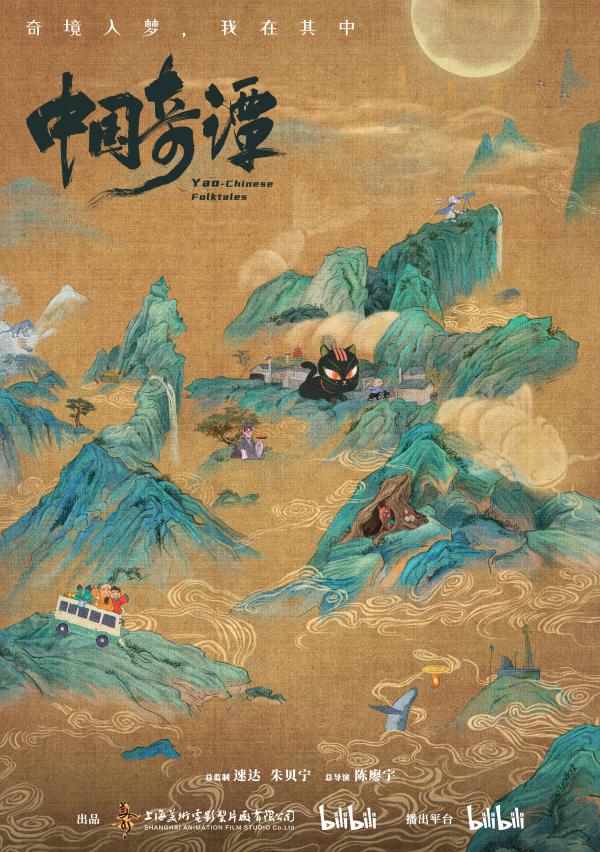
"Chinese Strange Story" poster
The first episode of "Chinese Strange Story", "Little Monster's Summer", is the beginning of the series. It is an interesting work rooted in the well-known text of "Journey to the West", but adopts the narrative perspective of small characters. It has caused heated discussions after it was broadcast. In the play, the "little pig demon" who is a low-level demon is replaced by many audiences as himself as a "beating worker".
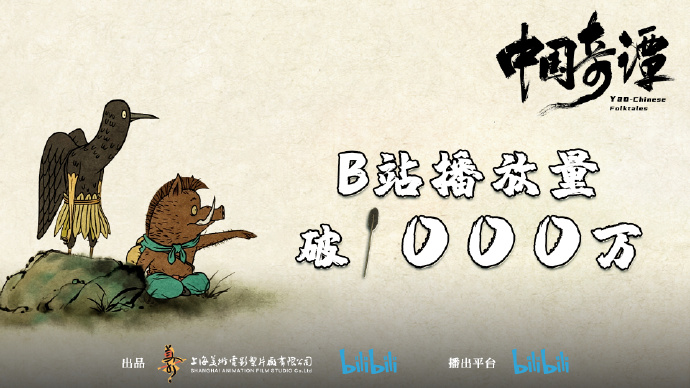
After the first two episodes were aired, "China Strange Story" received an enthusiastic response. The first episode of "Little Monster's Summer" resonated with many audiences.
Yu Shui, the director of this unit, has created many animation works such as "Superman", "Mr. Yun" and "Life Is This Way", and has won many animation awards at home and abroad. He said that his creative habit has always been "focusing on small people": "We Most people in this world are small people, so small people can arouse the widest resonance.”

Yu Shui, director of "The Summer of Little Monsters"
Previously, animation director Chen Liaoyu approached Yu Shui, informed him of the project "China Strange Story" and strongly invited him to participate. When Yu Shui heard that it was a project such as Shanghai Meiying and Station B, she immediately agreed. In his view, this is a strong alliance, "One is a hall-level production unit with countless classics in the hearts of our animators, and the other is a video platform that can show the cultural aesthetics of young people. For animation creators, I don’t think there is any comparison. This is a better combination.
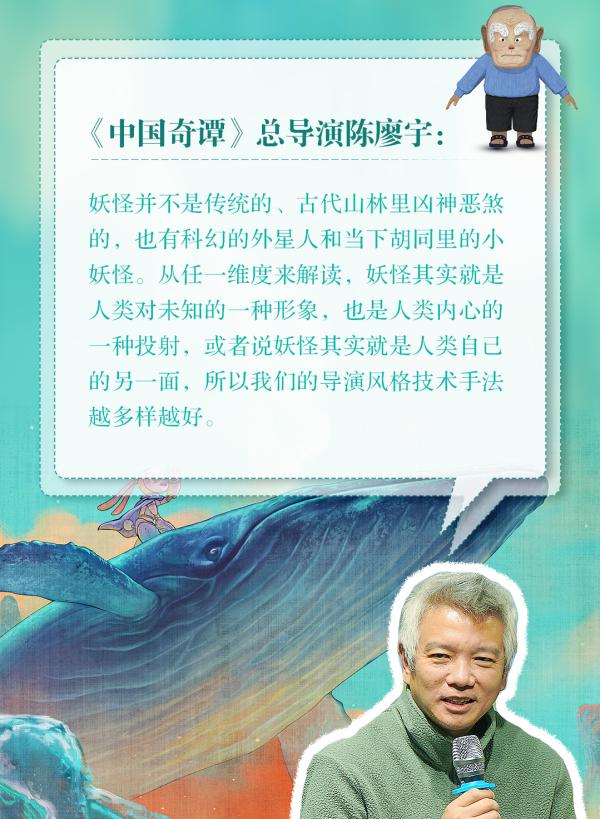
Chen Liaoyu, chief director of "China Strange Story"
During the creation process of "Little Monster's Summer", the older generation of animation artists in Shanghai Meiying checked every link. "The older generation of artists will be deeply involved in providing suggestions, and many of the suggestions they give are beyond my expectations. We always think that Shanghai Meiying is the representative of classic animation, but when giving advice to us young people, they will hope that We are a little more daring in our creations."
On the one hand, Yu Shui hopes to inherit the classic style of Shanghai Meiying, on the other hand, he also hopes to innovate. While collecting a large number of reference materials, the team repeatedly explored the painting style and techniques, and only then did the "Little Monster's Summer" express the art style that is now praised.
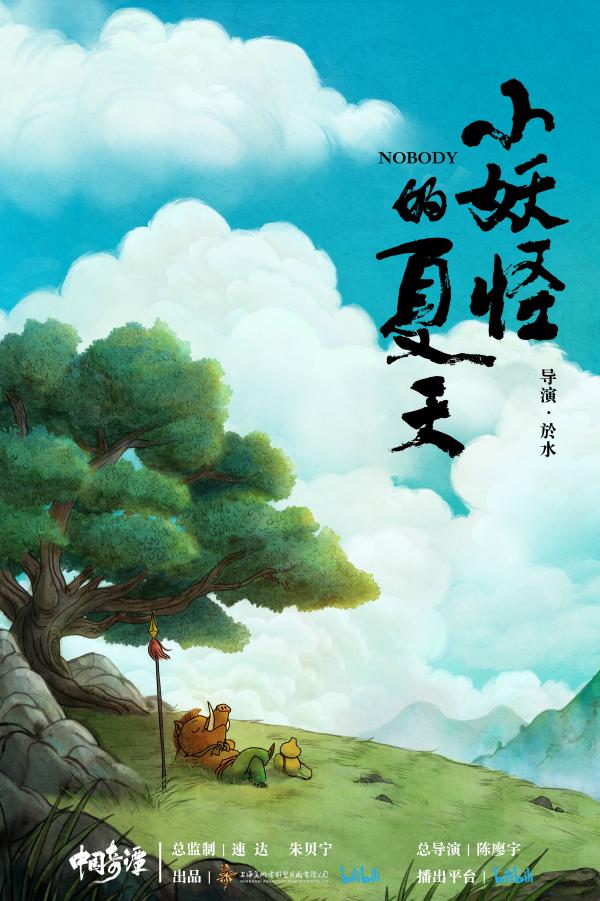
"Little Monster's Summer" unit poster, its English translation is "Nobody".
Nowadays, 3D animation is a major trend in the world, but this 2D animation short film has made many viewers comment that "I have regained my childhood love for 2D animation". Yu Shui said frankly that 3D animation has a performance advantage in theaters, "It is three-dimensional, and the visual performance and information can be conveyed very richly, while the creation method of 2D animation is relatively flat, and the amount of information conveyed in one screen is relatively flat. It’s not big enough, but the advantage is that it can be very free and vivid in shape.”
In the film, the ending of the little pig demon has a sad and happy reversal, which aroused the curiosity of many viewers: Has this ending been modified?
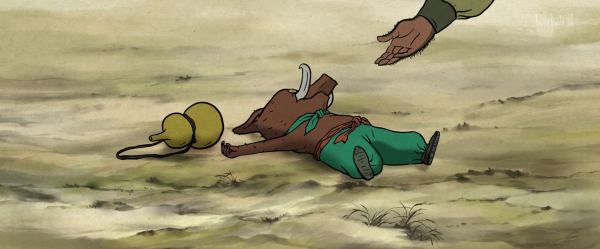
The ending of the little pig demon
Yu Shui said frankly that he decided to give the story a warm ending after researching and discussing with the team after the half-finished film, "There is an extra twist in the story, and I hope the story can reach more audiences, such as children."
Yu Shui always attaches great importance to finding a balance between personal creative aesthetics and public aesthetics. Almost every animator watched a lot of excellent cartoons in childhood, forming their "fantasy world", so that they finally decided to pursue this profession at a certain moment. "But when it comes to the process of learning and creating animation, the formation of our entire creative concept, we can't just talk about animation. I saw a lot of various films made by outstanding directors in the world in the film school, and many literary works will also be used in creation. Influenced by different art forms." Yu Shuidao, "I have always liked two creators surnamed Zhou, one Jay Chou and the other Stephen Chow, their works were very individual and innovative at the time, and the public liked them very much. .I also hope that my creation is both innovative and appealing to everyone.”
Interestingly, three generations of the Shui family participated in the creation of "The Summer of Little Monsters".
Yu Shui's father is a professor at the Academy of Fine Arts. He is good at calligraphy and was invited by Yu Shui to write subtitles. "The opening subtitles, including the 'days to last' in the middle, were all written by him." Yu Shui said with a smile, "Of course he is very happy, but he has always asked not to write his name on it, so I decided to let it go. Entering the end credits."

Yu Shui's father Yu Ping "inscription" for the little monster
And the daughter was "coaxed" by Yu Shui to voice the little pig demon's younger sister. The lines totaled three words, and the daughter was given a "labor fee": "Can I say one yuan for each word? She can also count the punctuation marks." , and finally gave her five dollars.” Yu Shui hoped that her daughter would have a deep feeling of participating in and immersing herself in the animation world in her childhood, “Whether she will engage in the animation industry in the future, this is a good memory.”
【dialogue】
The Paper: Many viewers don't know much about how the art style of animation is explored and formed in a work. Can you talk about how to find and determine your own style in the creation of this work?
Yu Shui: This is indeed a part that repeats a lot in this film. Because of the style of Meiying Studio, the animators are very familiar with its charm and temperament. On the one hand, we hope to inherit the national style of this Chinese school. , On the one hand, it also requires itself to make innovations.
So how can it be in line with the style of Meiying Studio, and at the same time be innovative? I also read a lot of materials, including the old comics I read when I was a child. They drew ancient characters, cloud patterns, architecture and other characteristics of the painting style. On the other hand, I also read a lot of works by contemporary painters and found a lot of reference materials. , try to make a new art style on this basis. Our art director has studied traditional Chinese painting since elementary school, and he has a lot of research in this area, so we finally found a style that is more suitable for this film. Finally, the effect is quite satisfactory now, and everyone seems to agree.
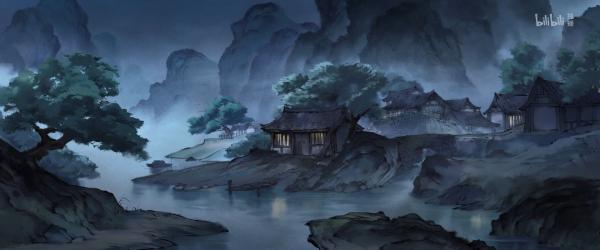
Stills of "The Summer of Little Monsters"
The Paper: Did you experience any twists and turns and difficulties during the creative process?
Yu Shui: At that time, I remember that the shape was almost fixed, and we were more inclined to draw the background in a less obvious style, but when the background was drawn by one-fifth, we felt that we had not met the requirements in our minds. , I still want to add a little more traditional Chinese aesthetics, and then rework, even if we sacrifice a little progress or funds, we still hope to make it the best.
There are still some difficulties, which may be the difficulty of specific pictures. For example, in the scene where the wolf chases the little pig demon at the end of the film, the style of ink painting is used, and there is a sense of ambiguity, which is different from the traditional two-dimensional animation. Similarly, the drawing technique will be relatively complicated.
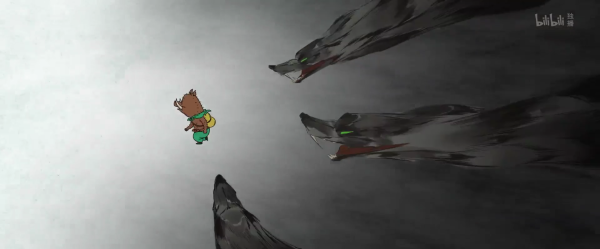
Stills of "The Summer of Little Monsters"
Moreover, our ink style for this scene requires that there is a sense of jumping between each frame and each frame, and it cannot be the smoothness that is produced by a computer at a glance. How to express this feeling in an intense chase scene? This is relatively difficult. The specific painting process needs to be painted frame by frame, and the workload will be much larger. Fortunately, we finally made it.
The Paper: Many viewers are curious, has the ending of Little Pig Demon been revised? Because I saw a very sad ending at first, but it was reversed later. Have you experienced any repetitions in the design of the ending?
Yu Shui: In the original direction, after the stick came down, the little pig demon fell down. The original direction is a relatively open ending, whether he passed out or what, we didn't say it clearly.
But then our creative side and the producer side held a meeting to study. When I was watching the storyboard or the semi-finished product, I felt that the ending was a bit cruel. And especially if we hope that the work can reach a wider audience, such as children and teenagers, then we still hope that the ending will bring the pig back to life.
Then on this basis, I began to think about how to make him stand up again. What is the turning point of the story? Then I thought of this ending.
I am quite satisfied with this ending. It adds another twist to the story, and at the same time makes the ending more warm. Of course, in the production and creation process of cartoons, there will actually be many directions, which is also a normal creative process.

Stills of "The Summer of Little Monsters"
The Paper: I was surprised to see this scene. Many viewers were scrolling through the barrage, saying, "This is the great sage in my heart."
Yu Shui: Yes, the audience is like this, with various preferences. I still have that point of view, if your work wants to be popular enough, you still need to consider various factors as much as possible.
The Paper: Many viewers feel that the little pig demon is very similar to himself as a "community animal", but in the past, in the narratives of many animation works based on traditional myths, are more heroic narratives? What do you think of the two very different narratives?
Yu Shui: I think there are two ways of writing literary works, one is about big characters and heroes, and the other is about small characters. The former may not have much to do with my life, but I want to see such a character in such a world, this kind of story that has a sense of distance from me. The latter is a little person who is very close to me, and I can even completely project it on him. I feel that he is playing myself, and I have a strong sense of substitution. Although the former has a sense of distance, it does not prevent us from watching happily, but that story is not your own.
My creative habits may be more inclined to the latter. I want to create stories related to ourselves, and this kind of story will resonate most widely. My perspective is on the little wild boar. But I don't reject the story of being a big character, including the direction of this film, which is also open. For example, the little pig demon may become a hero in the end, but I still hope to run through a small person's perspective in this 20-minute short film.
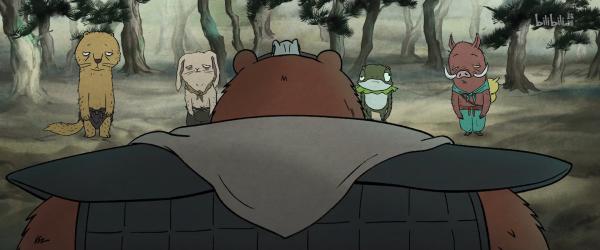
Stills of "The Summer of Little Monsters"
The Paper: The life of the little pig demon can quite correspond to the current workplace dilemma of the public. This kind of correspondence requires precise insight and refinement of life. Talk about the creative process?
Yu Shui: First of all, to create a script, you must first determine the relationship between the characters and the characters. For example, the little pig monster is the lowest monster in the monster system of this story. What kind of problems will such a little monster encounter? Woolen cloth? He may encounter common problems in the workplace for us ordinary people.
Then, from the logic of the script, what preparations do the monsters have to do when Tang Seng is coming? We have enumerated a lot, as you can see now, washing pots, chopping firewood, making arrows, in fact, twisting hemp rope and so on.
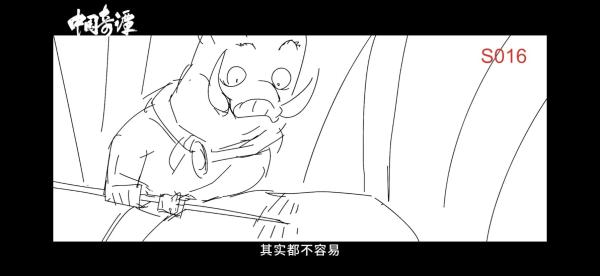
"The Summer of Little Monsters" Storyboard
We chose these three from many cases, the first is because they look more interesting visually, and the second is that the plot design will trigger some interesting points, so that these small plot passages can also have the so-called ups and downs.
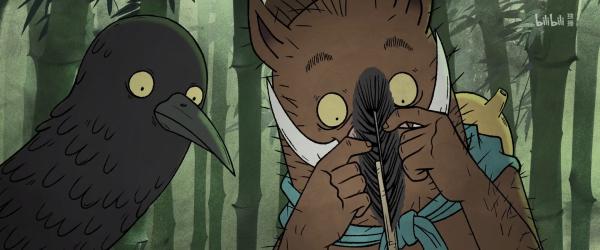
Stills of "The Summer of Little Monsters"
For example, in the part of making arrows, the shape of an arrow is a feather and a stick. It happens that there are many feathers on the crow monster. We thought, can we connect them together? Then, the little pig demon used feathers to make better arrows, what will happen? We suddenly thought that in the workplace, sometimes you find a particularly good working method, but your immediate boss thinks that you have challenged his authority, and he will ruthlessly reject this thing. This seems to be a very common situation. status. You can see that the logic of script creation has been deduced here, and the big framework of this small scene is there.

Stills of "The Summer of Little Monsters"
The Paper: Indeed, everyone was very touched when they watched it, and felt that it satirized the kind of things in the workplace such as "the top slaps the head, and the bottom runs away" and "a layman guides an expert" and other things.
Yu Shui: Yes, and these three things, the first one is to make an arrow, which is to challenge the authority, and then be ruthlessly rejected. This is the so-called "correctness" in the workplace, the important thing is "obedience"; the second Cleaning the pot is from mental torture to physical torture; the third is the kind of leader who suddenly changes the plan and doesn't care about the pressure of the low-level people, and the objective difficulty of this matter.
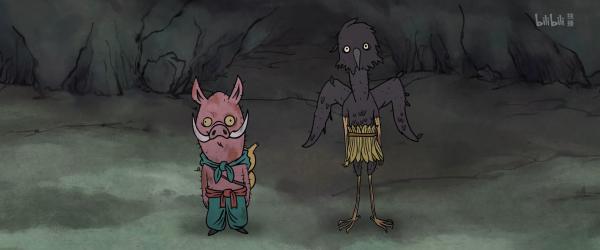
Stills of "The Summer of Little Monsters"
The Paper: The third "reform plan" is very interesting. In order to complete this impossible task, the little pig demon can only do crooked tricks, that is, to threaten human beings. That is the only little pig demon in the whole story who seems a little bit When it is "terrible", the demon really becomes a "monster" at this moment.
Yu Shui: Yes, this is actually because the plot must conform to the setting of the characters. Its setting is a demon. When a character is called a "monster", it must be related to and contrasted with a "human". It is called a demon, so it has to interact with human society. This also echoes the last old village chief's saying "thanks to the great sage for subduing demons and eliminating demons", right? If it weren't for the fact that the demon didn't harm humans in the past, then the words of the village chief would be very strange.
Surging News: The little pig demon was on his way back to the mountain from "work", and turned back home, which is quite a stroke of genius. This setting also wants to hear you chat?

Stills of "The Summer of Little Monsters"
Yu Shui: No matter from the perspective of narrative, or from the perspective of character construction, there is another perspective, the perspective of building a deeper resonance, which needs to be added to this scene.
First of all, I talked about a lot of things about work earlier, and there are more layers and a larger volume. At this time, it may be necessary to break it a little bit, and also "loosen" the rhythm of the entire narrative, because the front has always been Constantly pressurizing, suddenly joining a warm family life dialogue, the audience will feel a relaxation in the rhythm of watching the movie, and then receive the next most intense climax scene, there will be the so-called ups and downs, cadence changes.
Second, the so-called "broken" is also for this character, to make this character fuller, how his family is, whether he has parents, whether he has brothers or sisters, just can be explained through this scene, little pig The demon becomes more three-dimensional.
Third, we feel that Chinese people have a deep family concept. Many of us go to work in foreign countries. Our relationship with our family can be reflected in the relationship between Little Pig Demon and his mother.
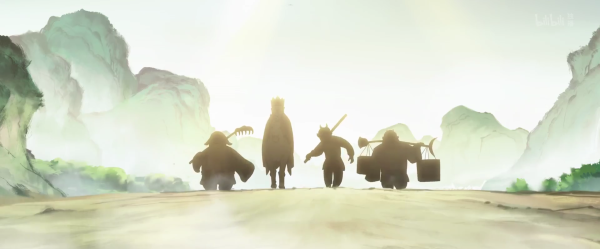
Stills of "The Summer of Little Monsters"
The Paper: The appearance of the four members of Journey to the West did not give a positive face. When the storyteller described the four members of Journey to the West, the images that appeared were not familiar images to the public. Why did they hide their images?
Yu Shui: That's what we thought at the beginning. Since we adopt the perspective of the little pig demon, then let him not see those big people, because he really can't see them in his life. Although he saw Monkey King in the last scene, we still want to stick to it. Since Monkey King didn’t show his face in the front, why should he show his face in the back?
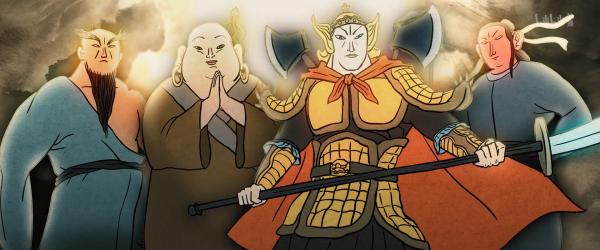
Stills of "The Summer of Little Monsters"
The four characters in the storyteller's passage, I think in the creation, you may have to think from the perspective of the characters in the play. Little Wild Boar has never seen the four characters of Journey to the West, so you can only use the imagination of language description to come up with Restore the image of a hero in his mind. The image of a hero in his mind is completely different from the one we are familiar with, and it will continue to change with the storyteller's description. For example, Zhu Bajie has a long nose and big ears. In the picture, the nose suddenly becomes longer and the ears become bigger. This is also a small interesting point that we hope to form, that is, there is a distance between some real things and our imagination.
The Paper: In addition, in "Journey to the West", Avalokitesvara gave the three vellus hairs to Monkey King. Here, Monkey King gave the little pig demon. Why such a design?
Yu Shui: Because there must be a farewell dialogue between Monkey King and Little Wild Boar at the end, but what he said specifically is actually hard to think about. Don't talk too much, keep it concise and to the point, but also feel the warmth of Monkey King, and give the little pig demon hope. We thought about it for a long time, and finally thought of mentioning the three hairs in the original book, but as for the three hairs given by Avalokitesvara, or Sun Wukong himself, everyone can interpret it by themselves. I saw a comment, "Idols give you gifts", which is quite interesting.
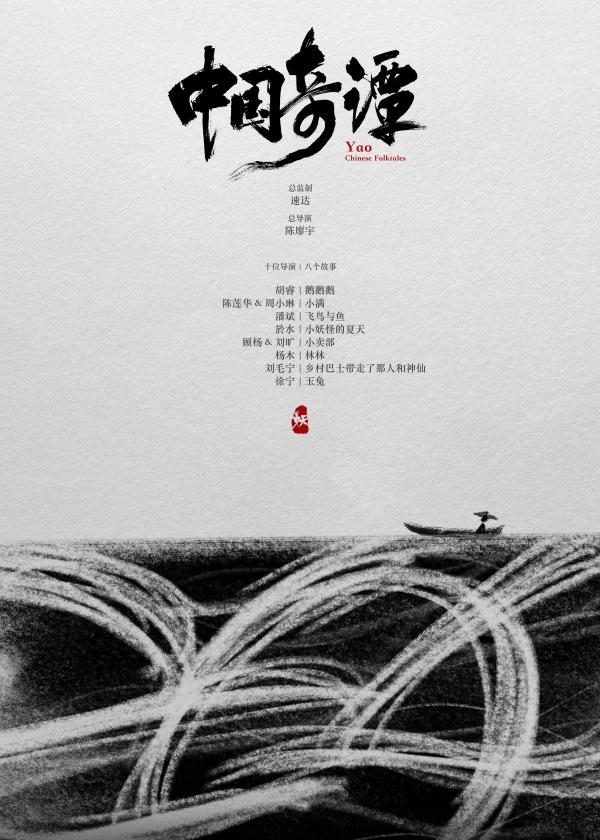
"Chinese Strange Story" poster. You can turn around and see what's under the water.
